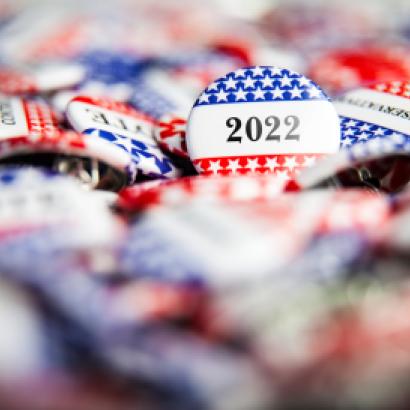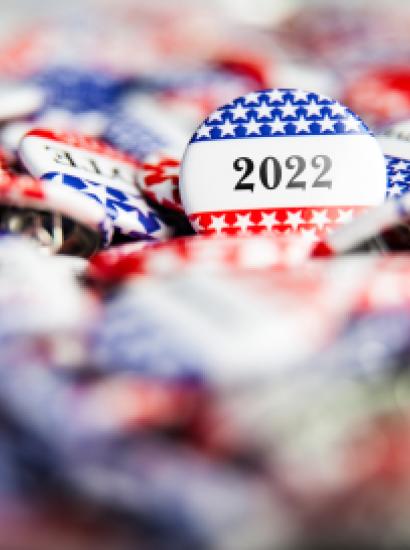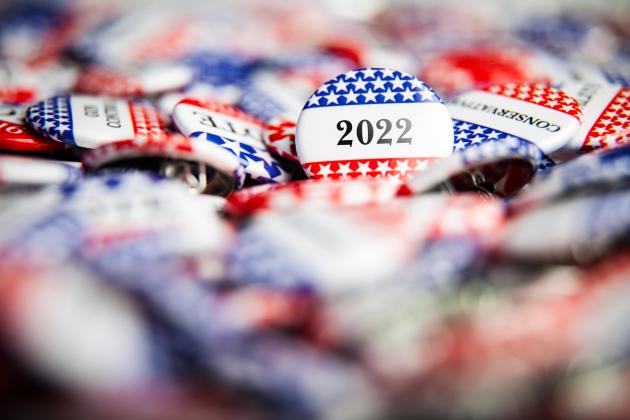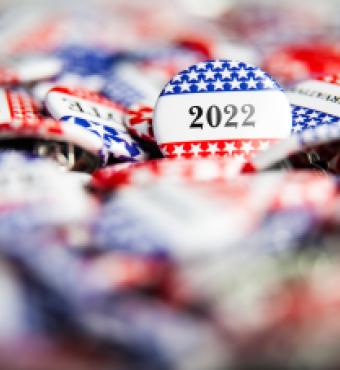The midterm elections on November 8 are just two weeks away, and at this moment voters appear to be moving sharply towards Republicans, both at the federal and the state level. In New York State, Republican candidate Lee Zeldin has erased a six-point deficit. He is now in a dead heat with incumbent Kathy Hochul, who has run her campaign as if the right to abortion—already protected by statute in New York—is what matters to voters concerned with potential energy blackouts, immigration, crime, inflation, and high taxes. Democrats in federal elections have much the same mindset; they speak of the January 6 events at the Capitol in the present tense. But Donald Trump has been relatively quiet in this election cycle. He did give out occasional endorsements, but he has not made himself the center of attention. The Democrats thus root their message in the past while voters see the current elections as a referendum on the policies of the progressive Biden administration, which has only moved further left since January 2021, driving away many Democrats and independents.
There is no way to ignore problems on the Republican side of the aisle, such as the tribulations of Herschel Walker in Georgia and Mehmet Oz in Pennsylvania, for starters. However, both their races have become competitive because the dominant issue everywhere is who will control the closely divided Senate, not the relative merits of individual nominees. The midterms are now framed as a referendum on the many divisive policies of the Biden administration.
The best place to start the analysis of Democrats’ decline is with their combination of energy and climate policy. The Democrats’ stated position is that the perils from global warming are so great that they require a rapid transition from fossil fuels to the so-called renewables—wind and solar. To achieve that end, the Democrats have attacked both the production and transportation of fossil fuels at both state and federal levels. The effort to shut down fracking on public lands has helped create a shortage in supply. This shortage is compounded by major European countries—Great Britain, France, Germany, Holland—by bans on fracking, which denies everyone reliable energy supplies for this coming winter. California simultaneously puts in place an electric-vehicle mandate for 2035 while warning today’s drivers not to charge their electronic cars at certain times to avoid overloading the power grid.
It has become painfully obvious that the only sensible strategy is to pump, consume, and export fossil fuels at high levels to alleviate these looming shortages, while working to make these energy sources cleaner and more affordable. The advantages are many. Shortages of natural gas now expose the United States to systematic risks of blackouts and brownouts, which only higher production today can correct. Fresh supplies reduce the demand for Russian natural gas, which undercuts its fragile economy and reduces the flow of resources needed to fund its senseless war on Ukraine. Even the environment benefits, because American production uses cleaner fuels than dirty production elsewhere—think Venezuela—and burning wood and peat in large quantities.
Unfortunately, the Biden response is to beg the Saudis and their OPEC partners in vain to produce more; to belittle the production efforts of the American oil companies; to slow the opening of new oil fields; and, starting with the closure of the Keystone XL pipeline, to disrupt the pipeline grid. Compromising the pipeline grid makes it more difficult to move oil from the upper Midwest to the New England states, which now face critical shortages. And the decision to draw down strategic petroleum reserves compromises long-term security by supplying at most transient relief to a deep structural problem, which is a domestic matter, not “Putin’s price hike.”
Finally, President Biden’s SEC chairman, Gary Gensler, demands companies make climate disclosures not only about their own operations but about operations at their contractual counterparties—at least if he can overcome the blizzard of constitutional and technical objections to his proposal. The Biden administration assumes that such information, which costs a fortune to obtain, will be of interest to the investors whom it is supposed to benefit. Vladimir Putin could hardly have designed an energy plan for the United States more favorable to his interests.
It’s (not just) the economy
The energy crunch goes hand in hand with a persistent 8.2 percent inflation rate, which has driven up mortgages rates, slowed housing starts, and forced families to make painful cuts in living expenses. Why? Partly because of the spending side of the climate crisis. Any responsible analyst would ask what kinds of climate improvements could be obtained, and at what price. However, instead of supplying estimates of either costs or benefits, the State Department claims that “[b]old action to tackle the climate crisis is more urgent than ever,” followed by insisting that the United States reduce emissions by around 50 percent by 2030 without offering any estimate of the financial and technical obstacles to achieving that goal. Nor has the Biden administration produced any analysis of the enormous inertia created by today’s permitting system that blocks new clean-energy projects, including wind and solar projects.
The new funds provided by the so-called Inflation Reduction Act have been estimated at $370 billion and counting, yet at best the analysis gives only incomplete estimates of the total social benefits and costs. The money thrown at these projects is coupled with yet another risk: an American military establishment so worried about climate resiliency that it cannot fill its recruitment quotas or keep a fleet in an adequate state of preparation to meet the Chinese menace to Taiwan or other threats.
The inflation fires may well be further stoked by the unilateral decision of the Biden administration to create a massive student loan forgiveness program that has, at least for the moment, been put on hold in federal court. Regardless of the program’s legality, it raises eyebrows not only for pumping an estimated $500 billion into the economy but also as a textbook example of the overbroad use of executive power. Biden invoked a definition of “emergency” under the Heroes Act of 2003 to treat the operation of this program as if it were on par with funding a war or a military operation. An emboldened Biden could easily use this logic to try to expand other government support programs, including the American Rescue Plan for children, without sensing the powerful truth that grants to one group of individuals are paid for by the effects of inflation on the rest of the population.
Crime and immigration
Though space runs short, the list of Biden vulnerabilities grows apace. The uncontrolled migration continues at a record and untenable rate, in large measure because of the Biden administration’s reluctance to do anything about it. For example, the administration decided to phase out the “remain in Mexico” policy that helped reduce the size of the influx. The resulting flow of new immigrants has in turn launched an ugly dispute involving, among others, Texas Governor Greg Abbott and New York City Mayor Eric Adams over which jurisdictions should house these individuals until their asylum applications can be processed. However, no stopgap solution to this program will work unless the federal government cuts off the source of this influx. That seems highly unlikely as long as Vice President Kamala Harris, another liability for the administration, plays any part in border-security policy.
Next to immigration, two local issues—education and crime—drive much of American society away from the Democrats. Many leaders of the American education establishment push hard for “woke” education, insisting that America is racist to the core. They thus demand major curricular transformations, including teaching the New York Times’s “1619 Project,” while pushing aggressive DEI (diversity, equity, and inclusion) programs in all aspects of hiring and promotion. Virginia Governor Glenn Youngkin’s upset victory in 2021 showed the public’s growing uneasiness with such policies. He won by promising to restore parental rights in education and to take a sane approach to handling hot-button issues like white supremacy and transgender rights rather than immediately capitulating to public-sector unions and the liberal educational establishment.
With regard to crime, the June 2022 drubbing of San Francisco District Attorney Chesa Boudin showed that even liberal voters refuse to accept policies that make it unsafe to walk their own streets. Disillusioned voters are apt to organize local political movements against progressive ideology that will then influence federal elections. Democrats have long been confident that Hispanic and Asian voters were solidly in their column, but those voters have been shifting their votes rightward ever since the 2020 elections.
In these and other areas, Democrats are facing a “wave election” that will call them to account for policy blunders.

















